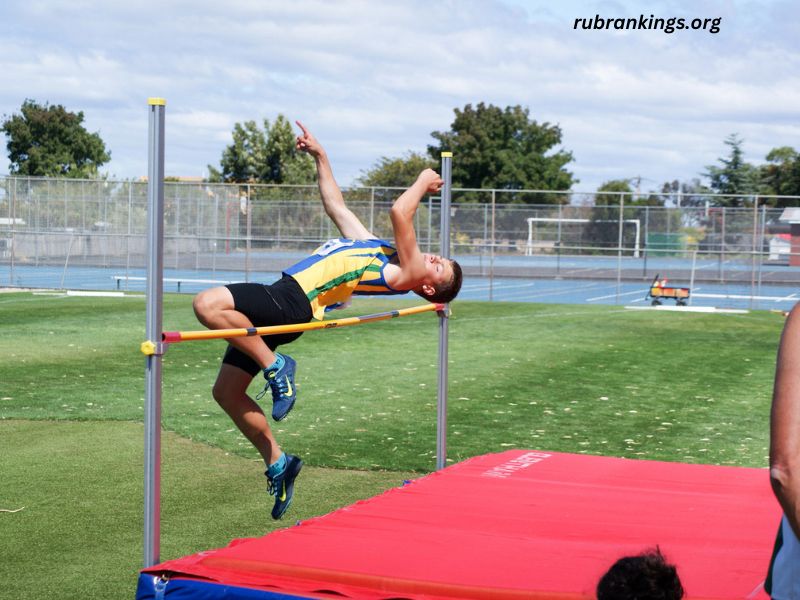Track and field meets are exciting spectacles that bring together athletes from various disciplines to showcase their speed, strength, and endurance. Whether you’re a participant, coach, or spectator, understanding the order of track meet events is essential for maximizing your experience and staying informed throughout the competition.
In this guide, we’ll break down the typical structure of a track meet, explore the sequence of events, and provide insights into how each event is conducted.
What is a Track Meet?
A track meet is a competition that includes a variety of track and field events. These events test an athlete’s abilities in running, jumping, and throwing disciplines. Track meets can range from local school competitions to professional and international events like the Olympics.
Structure of a Track Meet
A track meet is divided into two main categories:
- Track Events: Running races conducted on an oval track or straight lanes.
- Field Events: Jumping and throwing events held in designated areas around the track.
The schedule alternates between these categories to keep the meet dynamic and engaging.
Typical Order of Track Meet Events
The order of track meet events may vary slightly depending on the level of competition and specific meet guidelines. However, most meets follow a standard sequence to ensure fairness and efficiency.
1. Opening Ceremonies and Warm-ups
Before the events begin, the meet often starts with an opening ceremony or announcements. Athletes use this time for warm-ups and preparations to minimize the risk of injuries.
2. Field Events Begin
Field events usually kick off the meet and may run concurrently with track events. Common field events include:
- High Jump
- Long Jump
- Triple Jump
- Pole Vault
- Shot Put
- Discus Throw
- Javelin Throw
- Hammer Throw
Each event follows a specific order, typically starting with shorter and simpler jumps or throws (like the long jump and shot put) before moving to technically demanding events (such as pole vault and hammer throw).
3. Track Events Begin
Track events generally start with shorter sprints and progress to longer distances. Below is a breakdown of the typical sequence:
Sprints
- 100-Meter Dash: One of the most anticipated events, showcasing raw speed.
- 200-Meter Dash: A half-lap sprint requiring speed and curve-running technique.
- 400-Meter Dash: A one-lap race combining speed and endurance.
Middle-Distance Races
- 800 Meters: A two-lap race requiring a mix of speed, strategy, and stamina.
- 1500 Meters or 1600 Meters (Mile Run): A strategic race demanding pace control and strong finishing kicks.
Long-Distance Races
- 3000 Meters or 3200 Meters: Often referred to as the “two-mile race.”
- 5000 Meters (5K): A classic long-distance race popular in track meets.
- 10,000 Meters (10K): Typically reserved for elite-level competitions due to its demanding nature.
4. Hurdles and Relays
Hurdle races and relay events add variety and excitement to the schedule.
Hurdles
- 100-Meter Hurdles (Women) / 110-Meter Hurdles (Men): A short-distance race with evenly spaced barriers.
- 400-Meter Hurdles: A grueling race that tests both speed and rhythm.
Relays
- 4×100 Meter Relay: Teams of four sprint a lap in 100-meter segments.
- 4×400 Meter Relay: The final event in many meets, featuring teams of four running a full lap each.
5. Combined Events
Some meets include combined events like the decathlon (men) or heptathlon (women), which test all-around athletic ability across multiple disciplines.
Timing and Overlap of Events
Track and field meets are carefully scheduled to avoid conflicts between events. Athletes competing in multiple disciplines may find themselves juggling their schedules, especially if track and field events overlap. Organizers typically provide a detailed timetable to ensure smooth transitions.
Youth, High School, College, and Professional Meets
The order of track meet events can differ based on the level of competition. Let’s examine the key distinctions:
Youth and High School Meets
- Events are often shorter in duration and may exclude some of the longer or more complex events like the 10,000 meters or hammer throw.
- Emphasis is placed on development and participation.
College Meets
- Typically follow a standard order but include advanced events such as steeplechase and combined events.
- The competition level is higher, with stricter qualification standards.
Professional and International Meets
- Feature all standard events, including specialized races like the 4×200 relay or mixed relays.
- Often televised and attract large audiences.
Tips for Attending a Track Meet
Whether you’re attending your first track meet or are a seasoned fan, here are some tips to make the most of the event:
- Arrive Early: This allows you to watch the warm-ups and secure a good viewing spot.
- Bring Essentials: Pack sunscreen, water, and comfortable clothing.
- Follow the Schedule: Keep an eye on the official program to track your favorite events.
- Cheer Respectfully: Support all athletes while maintaining sportsmanship.
Why the Order Matters
The order of track meet events is carefully designed to:
- Minimize Fatigue: Spacing out events prevents overexertion, especially for athletes competing in multiple disciplines.
- Ensure Fairness: Events like relays are scheduled towards the end to maximize team participation.
- Enhance Viewer Engagement: Alternating between track and field events keeps spectators entertained.
The Future of Track Meet Events
As the sport evolves, organizers are experimenting with new formats, such as mixed-gender relays and shorter event schedules. These innovations aim to attract younger audiences and adapt to changing viewing preferences.
Conclusion
Understanding the order of track meet events is crucial for participants and spectators alike. The sequence not only ensures smooth operation but also enhances the experience for everyone involved. Whether you’re drawn to the explosive sprints, the tactical middle-distance races, or the spectacle of field events, track meets offer something for everyone.



